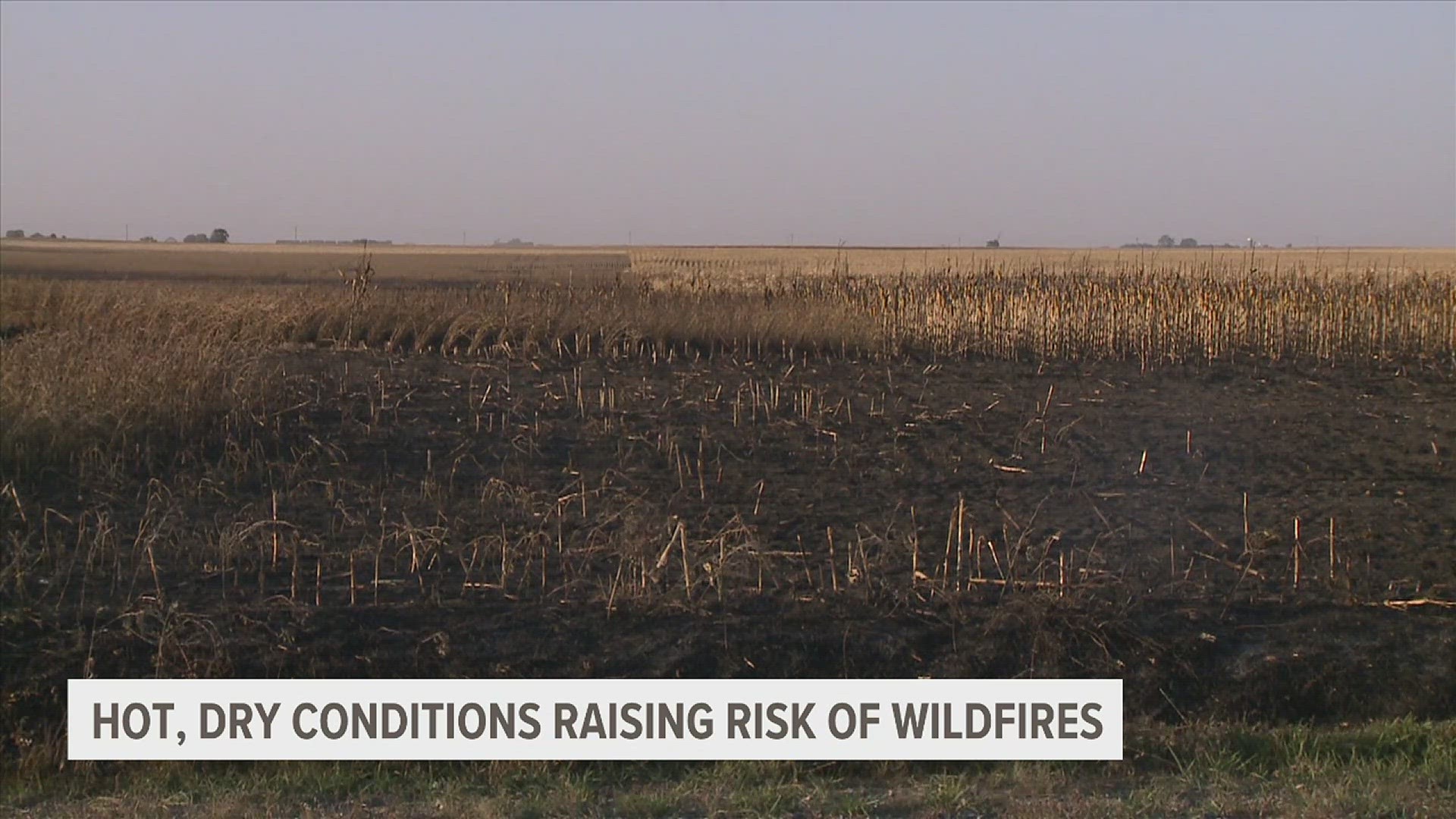IOWA, USA — As the dry summer comes to an end, officials with the Iowa Department of Natural Resources are warning farmers to keep themselves safe from fire during harvest season.
Because of the extended drought, officials say there's an increased risk of wildfires breaking out during harvest season, especially in northeast and southeast Iowa.
Here are tips from the DNR for what you can do to reduce the risk on your property.
- Properly prepare machinery to reduce the chance of a field fire from an overheated bearing (check the manufacturer’s recommendations). A spark from an improperly lubricated combine can instantaneously ignite dry plants and field debris.
Check that all fire extinguishers carried on the machinery are fully charged with loose powder inside. If the powder is not loose, remove the extinguisher from its bracket then thump the canister with a rubber hammer until the powder moves when shaken.
Make sure the size of the extinguisher is appropriate for the size of the machinery. You may need larger and/or additional extinguishers. Also, make sure you have the correct extinguisher for the type of fire to be extinguished. There are two types of extinguishers, the powder extinguisher for electrical and petroleum-based fires and the water extinguisher for vegetative fires. You may need to carry both kinds of extinguishers. - Keep equipment clean. Check and remove combustible harvest debris from motors, exhausts, ledges and brackets several times a day. A portable gas-powered leaf blower is great for blowing debris from the various surfaces of the combine.
- Service grain storage and drying equipment. Storage facilities are like your bank vault. Protect their contents by properly servicing all bearings, belts, motors and drags. Dryers frequently cause fires; have a qualified service technician perform the necessary maintenance before drying grain. Keep weeds mowed around the facilities to discourage a fire from spreading. All extinguishers should be handy, fully charged, and the proper size and type for the area.
- Turn off interior lighting in overfilled bins. A grain fire will start if the grain surrounds the bulb. Turn off the light’s breaker to avoid accidentally turning the light on. This also applies to hay storage facilities.
- Handle hay properly. Improper hay storage commonly causes or complicates farm fires. Preventative measures greatly reduce this risk.
Planning proper hay storage is crucial. Store hay away from combustibles such as gasoline, fertilizers and pesticides, as well as open burning areas like burn barrels, brush piles and vegetative burning. Arrange round bales in groups of 10 or fewer and place at least 100 feet away from structures. Leave 30 feet of mowed grass, bare ground or rock between the bale groups, creating a solid fire break.
Many hay fires occur by spontaneous combustion of moist hay, usually within six weeks after baling. Plan to bale hay at its driest stage and do not bale in the morning dew or too soon after a rain.
Check stored hay frequently for hot hay or an internal hay fire. Be aware of a caramel or strong burning odor, a visible vapor or smoke, a strong musty smell, and/or hay that is hot when touched. If any of these occur, call the fire department immediately and do not move the hay. Moving it exposes overheated or smoldering hay to oxygen, speeding the fire. - When tilling in the fall, till a 30-foot break around building sites, remote bin sites and outside storage facilities to minimize fire spread, and around fields if there is excess fine fuels in the area. Remove weeds and other combustibles around structures and stored equipment.
In the event of a field fire, officials say you should call 911 first. Then, to help control the fire, the DNR recommends evacuating livestock to another pasture and spraying high-pressure water on surrounding vegetation and structures. This should help limit the spread of embers.
Watch more news, weather and sports on News 8's YouTube channel

